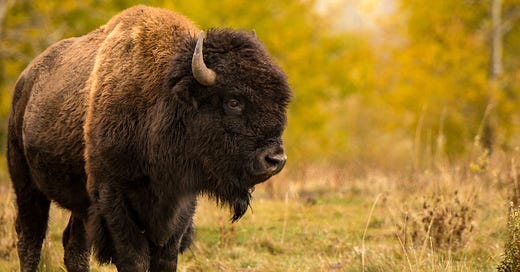Communal Imagining of the Bison
How we trek outdoors seems linked to how we walk through life.
We take wandering who we are in the moment. On the trail, I hear young people who blast pop music from their speakers. I see hikers trying to cross challenging trails in flip-flops. We leave our extra water bottles with those who don’t know how treacherous a day hike in high altitude can be. I’ve often been the one lagging behind because I didn’t commun…
Keep reading with a 7-day free trial
Subscribe to Wanderland to keep reading this post and get 7 days of free access to the full post archives.




